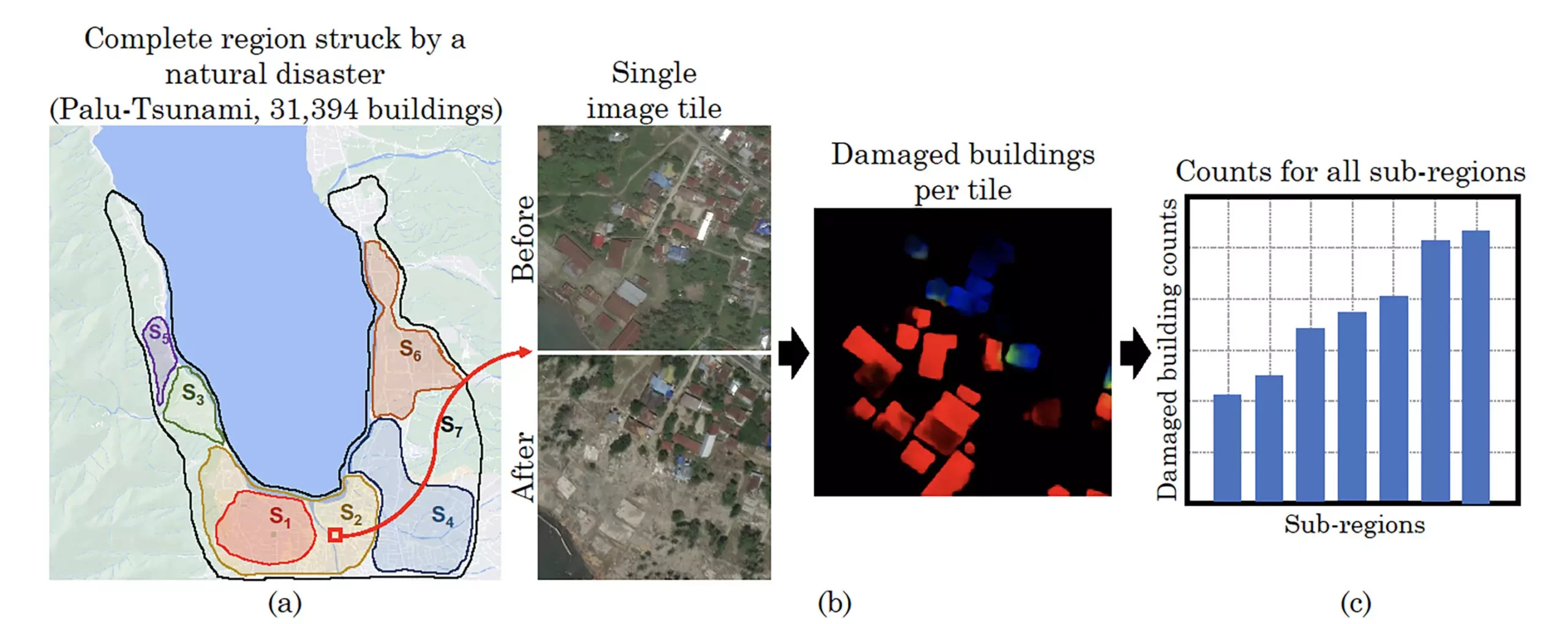In a groundbreaking development, a team of computer scientists at the University of Massachusetts Amherst has created an AI framework known as DISCount. This framework is designed to address two distinct challenges – the rapid detection of damaged buildings in crisis zones and the accurate estimation of bird flock sizes. By combining the power of artificial intelligence with human analysis, DISCount delivers precise estimates that can identify and count specific features within extensive image collections.
DISCount emerged from the collaboration between researchers at UMass Amherst and partners in the field. The team had been working with the Red Cross to develop a computer vision tool for counting damaged buildings following natural disasters or conflicts. Concurrently, they were assisting ornithologists in using weather radar data to estimate bird flock sizes. Recognizing the common thread of image analysis in both projects, the researchers set out to create a solution that could address both challenges effectively.
As the team delved into the projects, they encountered a common obstacle – existing computer vision models were not yielding accurate results. Despite the potential of automated counts, the researchers sought a solution that could offer both reliability and ease of use for non-AI experts. This dilemma prompted a reevaluation of traditional counting methodologies and led to the development of a novel approach.
DISCount represents a paradigm shift in tackling counting problems. By integrating human expertise with AI capabilities, the framework offers a unique solution to image analysis. Utilizing an existing AI computer vision model, DISCount sifts through vast image datasets to identify specific subsets for human review. This targeted approach allows researchers to focus on key images that are most indicative of the problem at hand, such as assessing building damage or bird flock sizes.
One of the key advantages of DISCount is its versatility. Compatible with any computer vision model, the framework empowers researchers to choose the most suitable AI approach for their specific needs. Moreover, DISCount provides a confidence interval for estimated counts, enabling informed decisions regarding the accuracy of the results. This ensures that researchers have a clear understanding of the reliability of their estimates and can make data-driven assessments based on the output.
The DISCount AI framework stands as a testament to innovation in image analysis. By bridging the gap between AI capabilities and human analysis, DISCount offers a powerful tool for addressing complex counting challenges. As researchers continue to explore the potential applications of this framework, the future of image analysis looks promising. DISCount exemplifies the transformative impact of collaborative research and interdisciplinary approaches in advancing technology for social good.


Leave a Reply
You must be logged in to post a comment.